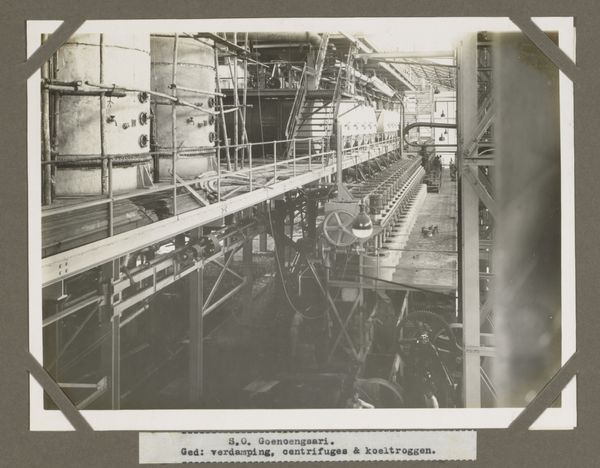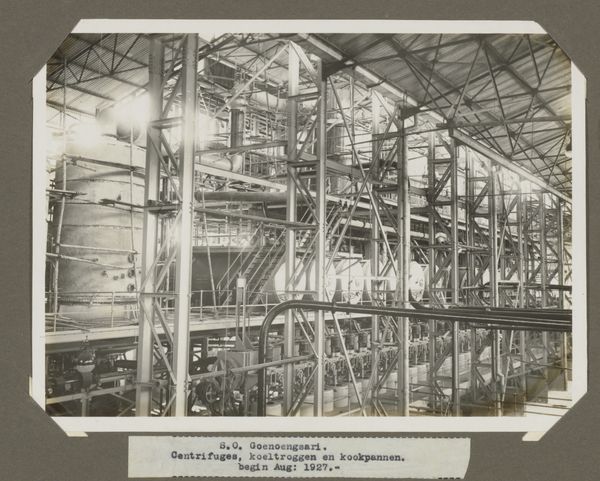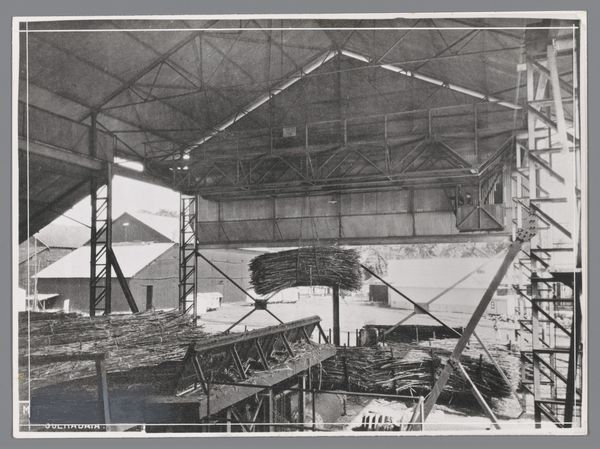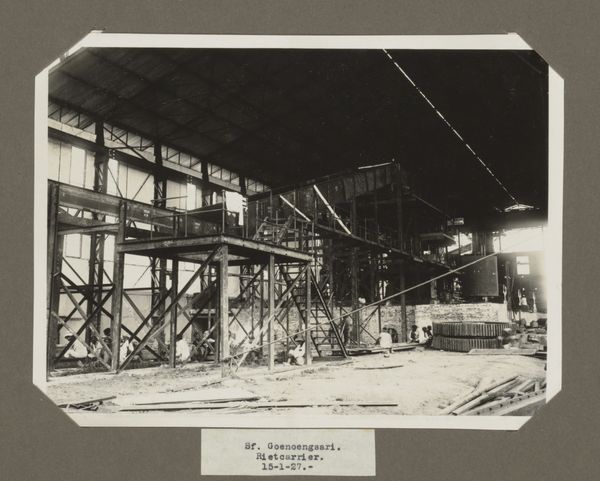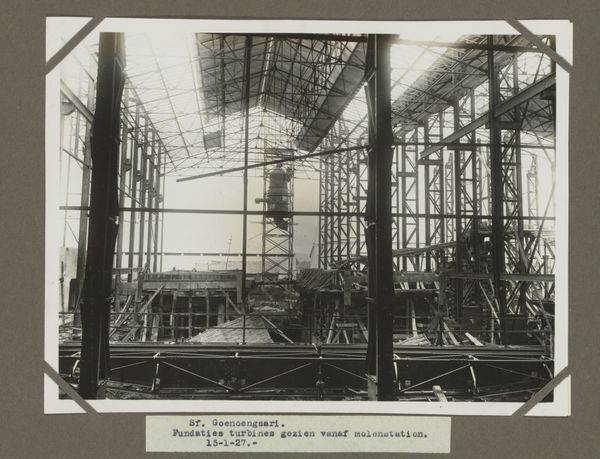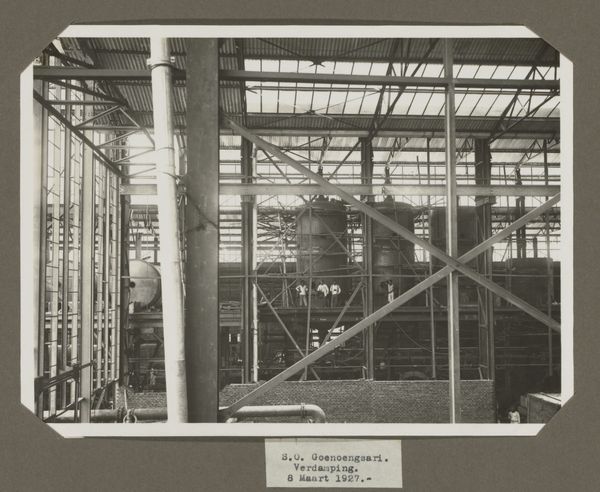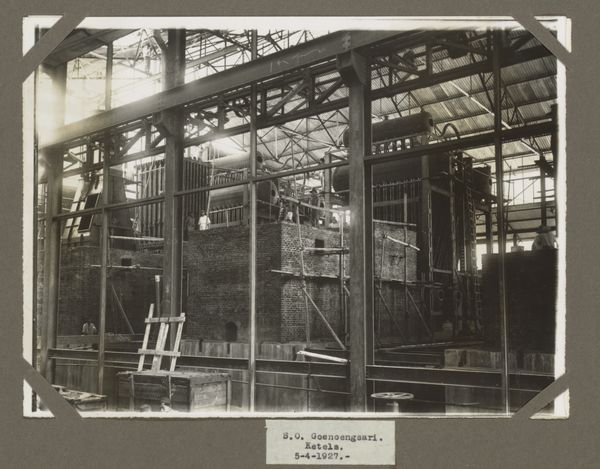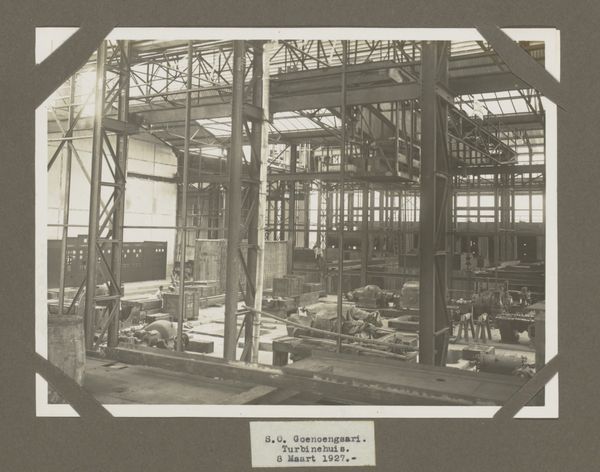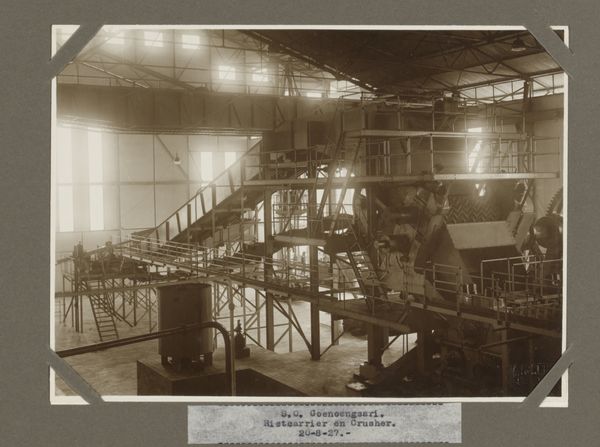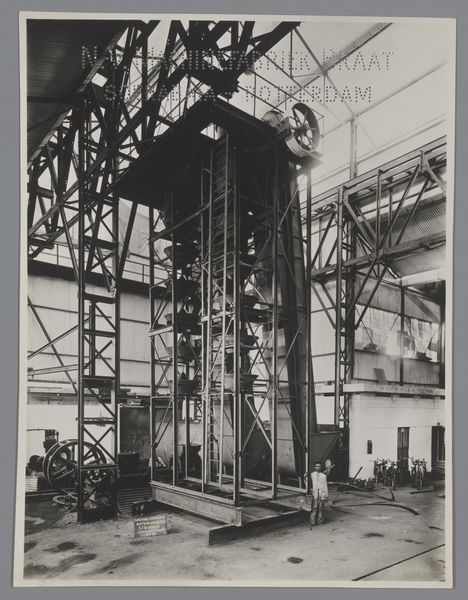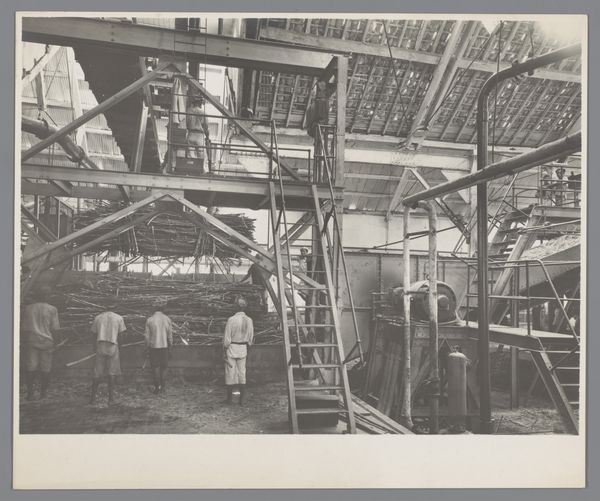
S.O. Goenoengsari. Montage dampleidingen etc. tusschen Verdamping & Kookstation. 1 Juni 1927. 1927
0:00
0:00
print, photography
# print
#
photography
#
realism
#
monochrome
Dimensions: height 236 mm, width 176 mm
Copyright: Rijks Museum: Open Domain
Editor: Here we have an anonymous photograph from 1927 titled "S.O. Goenoengsari. Montage dampleidingen etc. tusschen Verdamping & Kookstation." It depicts the interior of what appears to be an industrial facility. It's quite imposing with all the pipework and machinery. What do you see in this piece? Curator: Well, immediately I’m struck by the visual language of progress and industry so prevalent in early 20th-century imagery. The stark realism speaks to the then-current fascination with the machine and its perceived ability to improve society. It's a very European perspective on the colonies at the time. Editor: Colonies? I thought it was an industrial scene in Europe? Curator: Look closer at the title: "Goenoengsari". The "S.O." most likely means "Suiker Onderneming", which refers to sugar plantations and industry in the Dutch East Indies, now Indonesia. So this photo, likely taken by a Dutch photographer, presents the colonial enterprise: the modern industrial complex built on Indonesian soil and labour. This type of photograph played a role in promoting the Dutch colonial project. How does that framing change your view? Editor: Significantly! I initially saw only the mechanics, but understanding the historical and colonial context gives it a totally different weight. It becomes a statement of power, not just progress. I wonder what local communities made of such industrialization? Curator: Precisely. And that’s a crucial question to ask. It reminds us to be critical of seemingly neutral representations of progress. Editor: It's incredible how knowing the context shifts the meaning entirely. Thanks for illuminating that. Curator: My pleasure. I'm now more eager to understand how the depiction of the same setting changes as Indonesian photographers took over representation.
Comments
No comments
Be the first to comment and join the conversation on the ultimate creative platform.

